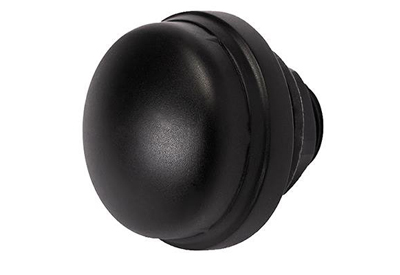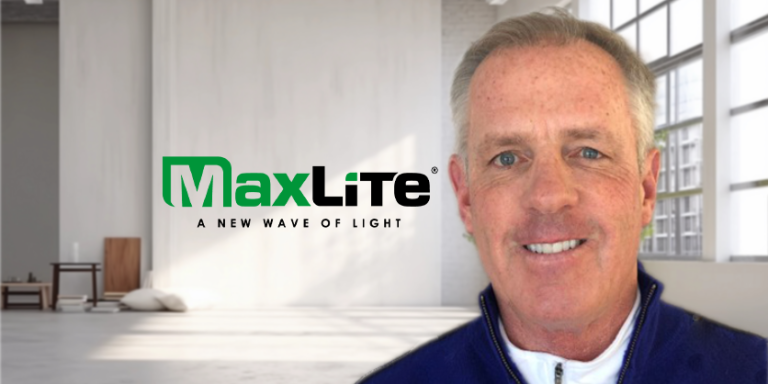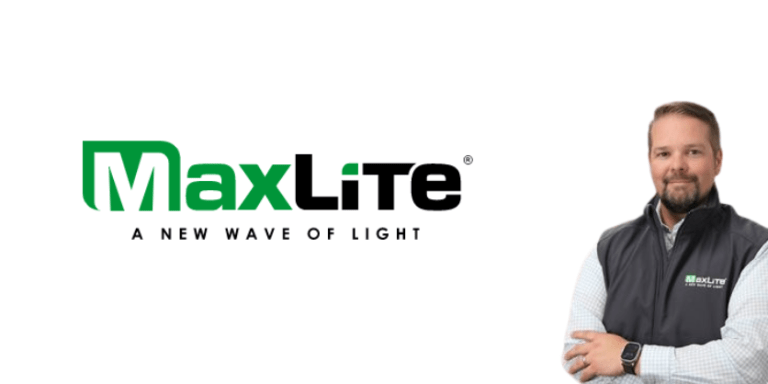MaxLite: Behind the Decision to Enter the Lighting Controls Market

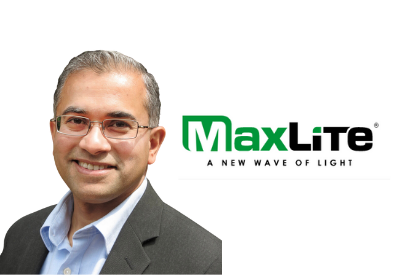 May 20, 2022
May 20, 2022
With widespread adoption of LED lighting significantly underway, one of the fastest-growing areas in the industry is the lighting controls market.
According to a recent report compiled by research company MarketsandMarkets™, the global market size for lighting controls systems is estimated to grow from USD $19.5 billion in 2019 to a projected USD $39.0 billion by 2024, at a CAGR of 14.8 percent. What’s driving that activity? A combination of factors that range from a decrease in LED costs to corporate energy-efficiency goals and government initiatives for smart city projects that incorporate some form of intelligent street lighting systems.
Realizing the opportunities, lamp and fixture manufacturers are entering the controls arena with products that complement their core offering.
David Gordon, industry consultant and founder of Electrical Trends, sat down with Umesh Baheti, MaxLite’s Senior VP/Product, Engineering and Supplier Relations shortly after the company launched c-Max Network Controls.
David Gordon: Why launch a lighting controls line?
Umesh Baheti: MaxLite always had 3rd party stand-alone controls in its portfolio offering, but we saw many requests to integrate controls with products and the demand for controls grow over the last few years. We recognized the difficulty of integrating other controls with our luminaires due to added complexity from modifications to mechanical design or driver or driver compatibility, higher UL filing expense and longer lead time to support customer orders. We also knew that controls was poised for growth as it offered additional energy savings even beyond LED conversion. Given MaxLite caters to the C&I, ESCO, national accounts, and utility channels, it felt right to launch our own controls offerings that can then harmoniously work with a broad set of MaxLite luminaire portfolio.
DG: What was your product development process?
UB: Our vision was to simplify controls – installation and associated commissioning process – and make it affordable. We had the idea of creating a controls-ready luminaire that would ease the pain for contractors and electricians while giving them total project flexibility. So, we toiled with a few concepts.
We looked at the competitive landscape of the offerings from the majors and other pure-play controls companies and felt that our sweet sport was addressing the control needs of small- to medium-size Design Build applications/installations. With a lean team of engineers and product managers, we were able to create a patented design to bring c-Max vision to fruition. And with massive design and execution focus, along with VOC from key customers and agents, we were able to hone in on the design features that made c-Max easy to install, operate, and future ready. We designed and integrated the hardware (sensor and receptacles) across 12 indoor and outdoor product families, tested all use cases across various applications, submitted to UL, and then went into production.
DG: Is the system proprietary, or can fixtures from other suppliers be integrated?
UB: I would say it is mostly proprietary due to the USB-C receptable design feature build in c-Max. The c-Max Basic cannot be used outside of MaxLite CR (controls ready) fixtures; however, with c-Max Network, an end-user can take advantage of our NPP-300W powerpack to integrate non-MaxLite 0-10V fixtures. For best performance, we recommend using MaxLite CR fixtures. In the future, we will be open to an OEM model to help other manufacturers use our controls.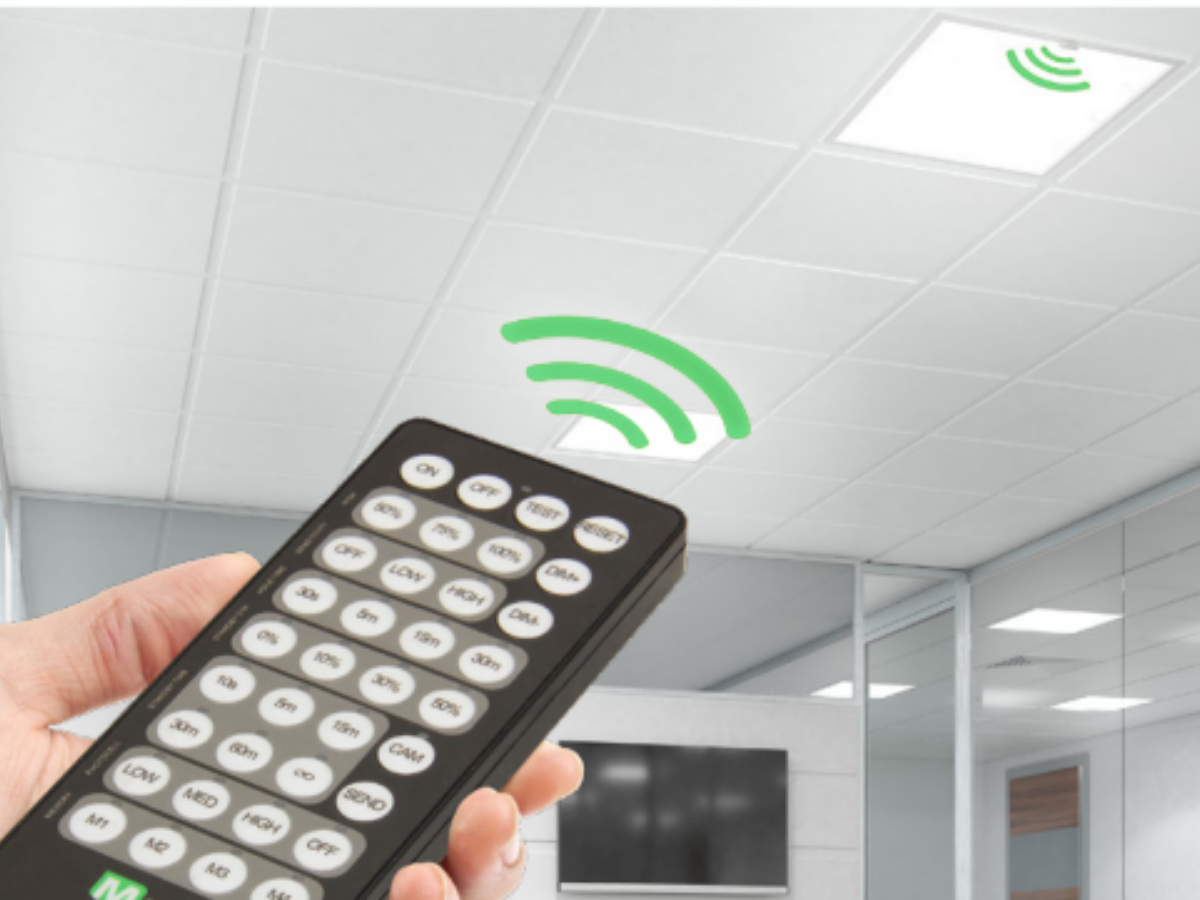
DG: Why a Bluetooth-enabled system?
UB: We designed c-Max to be a local wireless network solution. We chose Bluetooth for many reasons. It is mature and offers a reliable technology stack. Many IoT devices today use Bluetooth as it takes less energy to transmit short-range radio signals. This helps reduce cost and manage smaller form factor devices. Since we are talking about lighting today and focusing on motion and daylight detection, we don’t need a lot of bandwidth and higher rate of data transfer. Also from a commissioning standpoint, end-users with Apple or Android devices can use the Bluetooth connectivity features on their phone to easily commission c-Max Network. Our goal was to support our “ease of doing business” (#EODB) philosophy, and Bluetooth as a technology fit that very well.
DG: What tools are MaxLite providing to distributors to educate their contractors?
UB: We have created an extensive library of marketing materials including datasheets, how-to-videos, installation and commissioning guides, plus FAQs to help users understand c-Max’s features and benefits. We are engaging with our agent partners, who are also training contractors etc. Case in point, one of our agents did tailgate events with contractors to highlight how simple, versatile, and future ready c-Max is. The product and sales teams have also been doing show and tells/lunch and learns across the country. Finally, we will also provide these materials on MaxLite University, powered by the BlueVolt platform, so we can provide this valuable training to any end user, distributor partner, agent, or energy partner who wants to access through our University platform or via their own BlueVolt training forum.
DG: What type of applications do you see this being the “right” fit for?
UB: We are targeting small- to medium-size Design Build, renovation, energy retrofit, or remodel projects — essentially any space from simple room control to broader buildings can be managed with c-Max.
DG: Can the controls be managed from multiple phones? What happens if the facility manager isn’t available?
UB: Once a site is commissioned, all network settings are stored in a unique QR code that can be shared with other trusted users who can then access the network in the absence of a facility manager. All the user needs to do is download the app and scan the QR code and they will be able to access the settings that can be modified or adjusted if need be.
DG: Why should a contractor “sell” the network version and/or how will the customer know to upgrade?
UB: c-Max is a 2 Tier offering: Basic and Network. With the integrated USB-C receptacle of the controls-ready luminaire, it is very easy to change from Basic to Network nodes and sensors. Added functionality of wireless grouping and ability to set scenes and schedules are primary reasons a contractor can upsell the Network version. Wireless grouping allows for reduction in labor cost from having to lay out low-voltage wiring.
If a customer chose c-Max Basic based on budget needs initially and then later wants to add more functionality to the workspace, he/she can just swap the sensors and upgrade to Network controls without changing the luminaires. The end-user won’t even need an electrician to install the sensor and nodes. The power of c-Max is that it is future-ready. Customers can choose to onboard controls at the onset or do it later. It offers significant project flexibility.
DG: With all of the lighting controls on the market, how do you see distributors, and their contractors, deciding on the appropriate offering for their customer/application?
UB: Ease of use (#EODB), price point, and product features are some selection criteria. c-Max is simple, affordable, and packed with many energy-saving and code-compliant features that scale across both indoor and outdoor applications. The controls-ready design feature on our luminaires will truly allow the contractors and distributors to get the second bite of the apple with c-Max. c-Max offers a variety of choices — sensors, form factors, colors, and accessories to help meet application needs. It is truly a comprehensive offering, an ideal choice for a total site solution.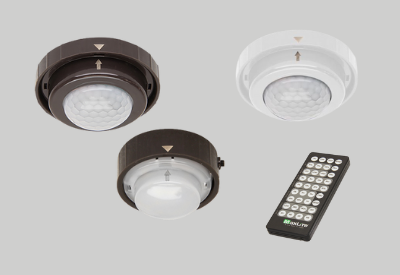
DG: What is the future of controls, and how do you see c-Max evolving?
UB: We think the future of controls is bright. Lighting controls will play an instrumental role in enhancing energy savings, increasing occupancy comfort, and providing flexibility. While the Tier 1 competitors have created enterprise and IoT solutions, the controls adoption for the masses still has not matured – mainly due to cost and complexity of solutions in the market. We are still in the early innings of it. c-Max is intentionally designed and positioned as a simple solution catering to small to mid-size installations. As we continue to evaluate the early success and understand from the customers what is working well and what is not, we will continue to build out the right solutions to create value for the stakeholders. We are excited about the future of c-Max.
DG: What else should we know about c-Max?
UB: c-Max offers significant project flexibility and creates value for stakeholders including contractor/electrician, distributor, installers, agent partner, and the end-user alike. Unlike many other luminaire level controls that are complex to install or change in the field, c-Max makes it easy to attach sensors. Sensors don’t need to be rewired and can be easily swapped in the field thereby saving on labor and installation time. With a broad device offering, distributors can easily stock sensors to meet project needs. The c-Max value proposition is appealing to installers and agents’ partners as they have a chance to sell controls-ready luminaires and then upsell controls to the end-user at any point in the future.
MaxLite’s new offering brings another solution to the commercial wireless lighting controls market and another opportunity to help distributors grow their business.





